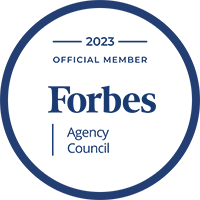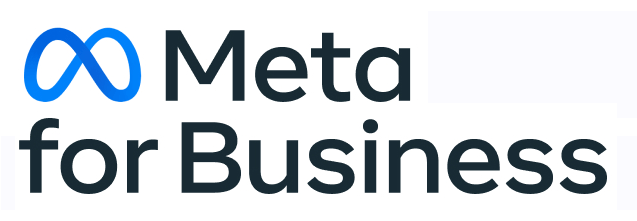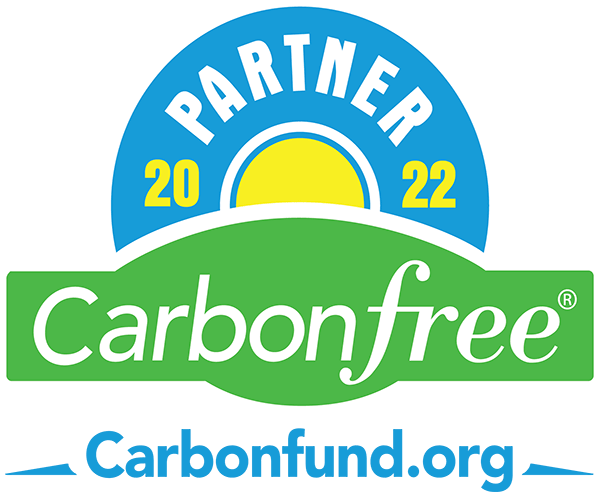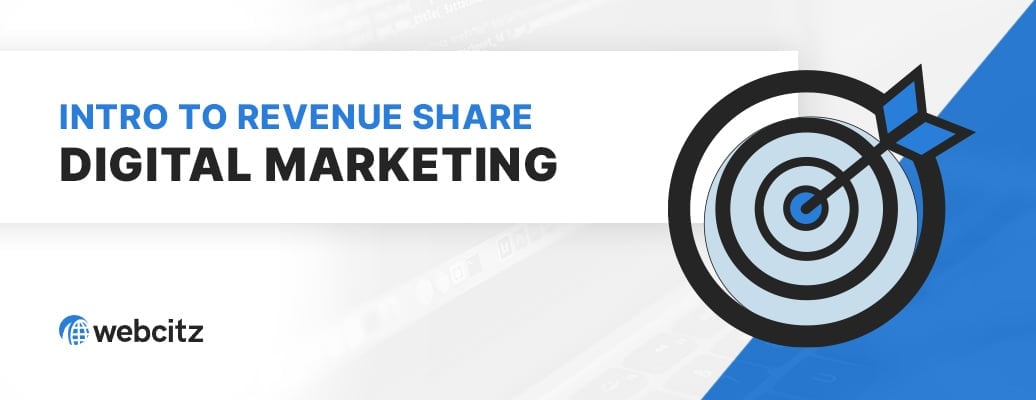Our PPC Management Services
We are a team of PPC advertising specialists with extensive knowledge in the latest PPC trends. Take advantage of our experience across dozens of business industries to help drive traffic and conversions to your digital assets.
1.) Keyword Research
In the context of paid search advertising, you’ll find keyword research mostly relates to search network campaigns on the Google Ads and Bing Ads platforms. After all, search marketing ads only show up based on what is searched on Google or Bing.
For example, a person looking for a roofing company in Chicago might search “Chicago Roofer” on a search engine. As a PPC account manager, targeting that exact phrase wouldn’t require in-depth keyword research.
However, what if that exact match keyword wasn’t producing enough search volume and the roofing company needed to increase their advertising reach? The solution would require keyword research within that search engine advertising campaign.
The next steps might involve the PPC team discussing with the roofing company what types of services they want to target more often and within what geographic areas. That PPC strategy might also require some broadening of the keyword match types.
For instance, the PPC manager might discover high search volume for “Arlington Heights roofing companies” or even “Chicago roof repair.” The first phrase is targeting a suburb just outside of Chicago, which might still be in the service area of the roofing company. The second phrase is targeting a slightly different service, which might result in a more lucrative roof replacement project if the repair work is extensive.
You can also benefit from keyword research when building out lists of negative keywords. These are used to stop your PPC ads from showing in search queries that you know won’t produce conversions.
For example, someone looking for “free roof repair” or “how to advertise to roofing contractors” isn’t likely to purchase a roof replacement service. However, they might see your PPC ads if you are using broad keyword targeting without any negative keywords like “free” or “advertise.”
As you can see, no matter how obvious your keyword research needs might be at the start of building out your campaign, they become more complicated as you begin to scale your ad groups and reduce wasted ad spend. Having an agency handle your PPC management services can help ensure things like this are looked after routinely, to help save you money.
2.) Audience Research
When you hear audience research talked about in online advertising, it is often within the scope of scaling social media ads on Facebook and Instagram. There are options within Google Ads and Bing Ads for audience targeting as well though.
Let’s go over a little history on audience research and targeting within the Facebook Ads platform.
In years past, PPC experts relied heavily on building out their own custom audiences within Facebook. After all, one of the most attractive features of the Facebook Ads platform was the data it collected on its users, which advertisers lined up to exploit.
As time went on, data privacy and machine learning both had an impact on custom audiences.
When Apple released its iOS 14.5 update, they included a pop up message that allowed users to easily opt out of personalized ad tracking. This had a negative impact on Facebook’s ability to track user behavior on mobile devices. In fact, it even affected the accuracy of ad attribution reporting.
Then came improvements to their machine learning algorithms, which greatly diminished the need for custom audiences and lookalike audiences for most advertisers. Their algorithm has become so good at understanding your ideal audience that you typically do more harm than good by choosing your own interest-based targeting.
While there will still be plenty of PPC managers relying on custom audiences, it is clear the trend is moving toward broad targeting. You can see it in every update within Facebook Ads Manager as they slowly remove interest-based targeting options, or push for “Advantage Detailed Targeting.”
This blog article from Social Media Examiner does a good job of talking about recent changes to audience targeting, if you’d like a second opinion.
This isn’t to say audience research and targeting is going away. There will always be targeting options that can be manipulated within ad campaigns to squeeze a little extra performance.
A Few of Our PPC Experts





3.) Landing Page Optimization
The quality of your landing page will be a big factor in the success of your PPC campaigns.
When our PPC marketing services are brought in for the management of a pay-per-click campaign, we start by looking over the landing pages to see if they follow best practices. Here are some of the account performance factors we look for in this PPC audit:
- Is there a benefit-focused headline?
- Are there any images above the fold?
- Is the content written in a compelling manner?
- Am I able to find a lead form right away?
- Are the call to actions easily noticeable?
- Does the page load quickly?
- Is there social proof?
- Am I able to load the page on a mobile device?
There are so many factors that come into the design and development of a quality landing page.
Please, don’t spend money on PPC ads until you have a landing page that follows best practices!
Ideally, you should never consider your landing page to be finished. Try running A/B testing every few months to continue refining your sales pitch.
4.) Sales Funnel Development
As an alternative to a landing page, you might want to consider building out one or more sales funnels. We rely heavily on sales funnels for lead generation, email audience building, and even online purchases.
For example, we have a client that promotes an online fitness challenge. While managing their digital marketing we built multiple sales funnels within Click Funnels. Here are some of the funnels we made:
- We used squeeze pages to help capture email addresses while building awareness for the program.
- We used lead magnets to provide people with healthy eating tips, fitness tips, webinars, and sneak peaks in exchange for an email address.
- We used application funnels to push people toward the idea of wanting to apply to participate in exclusive programs.
- We used sales letter funnels to serve as the registration system for the online program.
There are many different types of funnels, so you aren’t limited to just these options. Just keep in mind these can be incredibly helpful for gauging interest in a product or service, building out an email subscriber base, and selling a product or service online.
If you do decide to implement a funnel, take your time at it. Doing this type of work yourself can take weeks of training. You can save yourself some time by looking for a PPC management firm, like WebCitz, to handle the heavy lifting!
5.) Conversion Rate Optimization
Having a clear understanding of your conversion rate is critical to making informed advertising decisions. The average conversion rate is between 1-3%, but that varies greatly between industries, products, and services.
Let’s run through a basic scenario to help illustrate the impact of conversion rates.
- You sell a $100 coffee machine on your website.
- You have a 1% conversion rate, meaning for every 100 people that visit your website you sell 1 coffee machine.
- You have a $0.50 average cost per click (CPC), meaning for each person that visits your website you spend 50 cents.
- To sell 1 coffee machine, you need 100 clicks from PPC ads, which would cost you $50. This is known as your cost per acquisition (CPA).
- Your return on ad spend (ROAS) would be 2x, meaning for every dollar spent in PPC ads you get two dollars in return.
For most businesses, this return on ad spend wouldn’t be acceptable unless the margins were great.
To improve the situation, you hire a PPC advertising agency to modify your campaign settings, quality scores, ad copy, ad creatives, and landing page experience.
Let’s assume those improvements bring your conversion rate up from 1% to 2%. That means for every 100 visits to your website you now sell 2 coffee machines. This is twice the return on ad spend! You might actually be profitable now selling those coffee machines.
Performing routine conversion optimization can be crucial to the management of your pay-per-click advertising.
6.) Ad Creation
This is potentially one of the most important aspects of a Facebook Ads account.
When you run Facebook Ads or Instagram Ads, you are mostly targeting a cold audience that is more interested in quickly scrolling by advertisements in favor of seeing what their friends and family are up to online.
You have to develop an understanding of how to capture someone’s attention in a split second, allowing your click through rate to stay at a high level.
To do this, you need build out amazing ad creatives that make someone stop for a second and say to themselves, “wait a second, what…?“
This doesn’t happen by running the same ad creative (or ad copy) over and over and over again. You have to change things up frequently.
If you don’t change out your ad creatives / ad copy and test new ideas, you’ll suffer from what is called “ad fatigue.” This is the state in which your target audience has already seen your ad so many times that they instinctively scroll by it without ever interacting with your brand.
Don’t be caught in this situation. You have to understand when to pause an ad because it isn’t performing as well as it once did. You have to understand when to test new ideas, especially if you are emotionally attached to an ad that you spent a lot of time making.
This is one of the benefits of working with a PPC management company like WebCitz, since we are proponents of testing new ad creatives regularly.
7.) Ad Attribution
Knowing your ad attribution is important. If you don’t know what ad attribution is, it is the process of determining which advertisement resulted in the conversion you experienced on your website or funnel.
You might be suffering from ad attribution issues and not even know it.
Do you rely on Facebook Ads or Google Ads to tell you which campaigns, ad sets, and ads are performing the best?
If so, you are relying on incomplete data to form critical decisions about when to turn off or scale an ad within your marketing campaigns.
For ecommerce businesses running on Shopify, we recommend you look at ad attribution companies like Triple Whale or Northbeam to get a much clearer picture of your ad attribution. It is common for PPC companies to rely on third-party tracking pixels instead of a Meta Pixel.
For content-based websites, or ecommerce websites in platforms other than Shopify, check out ad attribution companies like Wicked Reports or Hyros to get a better idea for how well each of your PPC advertising campaigns are doing.
Facebook Ads Management Pricing
- The starting price is for ad accounts spending less than $1,000/mo. For larger accounts, please reach out for a custom quote.
Google Ads Management Pricing
- The starting price is for ad accounts spending less than $1,000/mo. For larger accounts, please reach out for a custom quote.
Types of PPC Campaigns We Manage
There are numerous ways to manage advertising services for your business.
Let’s discuss some of the most common PPC ads being run within various business industries.
1.) Local Ads PPC Management
You can use nearly any advertising platform to run local ads for your business. Depending on the nature of your local business, you may find better success in one platform versus another. It is important to try out every available option to see which works best for your needs. Let’s talk about a few local advertising choices.
There are going to be two options from Google.
The first is to run traditional Google Ads, potentially using their newer campaign type of Performance Max. This is a very dynamic ad campaign type which utilizes multiple headlines, images, videos, and service locations to allow the Google algorithm to find the best combination of assets to bring business to your location. We often use Performance Max campaigns for professional services companies, such as accountants, lawyers, dentists, and physicians.
The second option from Google, if you are in a qualifying business industry, is to check out their Local Service Ads. The Google Local Service Ads offers a pay-per-lead model, which means you get charged a flat fee for each lead the platform provides you. We often use Google Local Service Ads for home services contractors, like plumbers, electricians, roofers, and heating installers.
You can also use Facebook Ads to target people in your local area. This is a little more straightforward, since it really just involves setting up a campaign that has ad sets with geographic restrictions. Our PPC account managers often rely on local Facebook Ads for all types of businesses.
2.) Social Ads Management
Pretty much any online ad you see on a social network site is going to qualify as a social media ad.
The trick to social ads is keeping the ad creatives fresh. If you don’t rotate out ad creatives every few weeks your campaign performance will slowly decrease. For higher spending ad campaigns, you might need to look at weekly ad creative changes.
The best part of social ads is you can target audiences that have never thought of your product or service, or perhaps just aren’t thinking about it now. When running search ads, that is quite the opposite since your ads are only going to show when someone is actively looking for what you offer.
That benefit can also be a curse though, since conversion rates are often lower when people aren’t closer in the revenue funnel of making an immediate purchase.
3.) Search Ads PPC Management
If you know people are looking online for the products or services you offer, you’ll want to invest in search campaigns.
There are some people out there who refer to this as Search Engine Marketing, or SEM for short. This is just a different way of explaining search engine ads, which are advertisements placed on the search results page of a search engine. These are also charged on a pay-per-click model, versus a pay-per-impression model that is more common on social media platforms.
If you’ve been running pay-per-click search ads (also known as text ads) on Google for a while and have been successful at it, our pay-per-click PPC specialists suggest considering copying the campaigns over to the Bing Ads platform. As of an October 2022 study from StatCounter, about 3.57% of online users rely on Bing for their primary search engine.
4.) Display Ads Management
You’ll find display network ads on all kinds of message boards, chat rooms, game lounges, news websites, gossip websites, and more.
These are commonly used within the Google Ads and Bing Ads platforms.
To get started with display ads, you just need a set of ad creatives in different image sizes. It also helps to have a general idea of your target audience, but both ad platforms have their own algorithms that help you produce results from your ad spend.
5.) Retargeting Ads Management
Not everyone is going to convert during their first experience with your website, landing page, or sales funnel.
It is almost always recommended to set up retargeting ads to help bring people back to your website after they’ve had time to think through different options.
You can run retargeting ads (also known as remarketing ads) on any platform, too.
6.) Shopping Ads PPC Management
This type of paid search marketing ad was popularized by Google Shopping Campaigns.
To get started with Google Shopping Ads, you just need an ecommerce website, a product feed (CSV or TXT), a Google Merchant Center account, and a Google Ads account.
With these tools in place, you’ll be able to provide Google Ads an updated list of all of your accurate product data, including the title, SKU, image, price. From there, they will be able to find the right types of search queries to display your products at the top of the search results page. With a little bit of luck, you’ll have increased ecommerce sales in no time at all!
7.) Video Ads Management
You can run video PPC ads on YouTube, Facebook, Instagram, and other social networking websites.
If you are interested in running YouTube Ads, you’ll just need to set up a video ads campaign in Google Ads.
To run video ads in Facebook or Instagram, you’ll need a working Facebook Ads account.
Both ad platforms offer excellent conversion opportunities with video advertising. Our PPC account managers frequently use video ad campaigns to showcase product launches, custom services, personal introductions, and more!
If you have the budget to support ad creatives in video format, definitely look to implement them into your PPC campaigns.

Our Free PPC Metrics Calculators
Our digital marketers are so excited about paid ads, they worked with our web development team to build out some helpful PPC calculators that you might be interested in trying!
You are welcome to use these, even if you aren’t a client of our PPC management services!
PPC Management FAQs
What exactly is PPC management?
The act of creating and optimizing paid advertising campaigns is known as a PPC management service. That is an incredibly simple explanation though, so let’s dive a little deeper.
To provide professional PPC management, an advertising agency often starts by getting to know your company and its business model. This information helps determine the next steps, since the way you’d approach pay-per-click advertising for a local service provider is much different from how you’d handle it for an ecommerce brand.
For example, local service providers are often only interested in qualified leads. This can be accomplished through PPC advertising that drives web traffic to an optimized landing page or sales funnel. If those digital assets don’t yet exist, or need substantial improvement, then you could start with Google Local Service Ads or Facebook Lead Forms.
Alternatively, ecommerce brands are most often interested in online sales. This can be accomplished through PPC advertising services that drive site visitors to an optimized product page or category page. In some cases, it might even make sense to include Google Shopping Campaigns. We’ve even utilized sales funnels to help sell products, subscriptions, and services.
The next step in a PPC management service is understanding the metrics that will be used to optimize and scale. Most PPC management agencies will implement email collection marketing strategies through squeeze pages or lead magnets to help increase the value of PPC advertising services.
To be successful with pay-per-click ads, you often have to utilize multiple advertising strategies and marketing tools. For example, the best PPC campaign management services will include tactics to:
- Drive traffic to your digital assets (websites, sales funnels, etc) from search engines, social media,, and other websites.
- Increase revenue for your business through qualified leads or online sales.
- Better understand ad attribution through the integration of third-party attribution software.
- Showcase social proof through case studies, white papers, video testimonials, and other factors.
- Build and nurture relationships through user generated content, story creation, and email address collection.
- Test ad creatives across various ad placements and between different media formats.
How can my small business benefit from PPC management?
PPC advertising can drive targeted traffic to your website or landing page in a very short time. With effective management, your business can achieve better ad positioning, reduced costs per click, and higher return on ad spend.
I’ve tried PPC before and didn’t see results. How will your services be different?
Paid ad management requires continuous optimization and expertise. Our team keeps informed of the latest advertising trends, algorithms, and best practices. We’ll analyze what went wrong previously and devise a strategy that’s more aligned with your business goals. We often find business owners managing their own ad spend don’t properly understand advanced settings within ad accounts, don’t understand keyword and audience targeting tools, and don’t utilize well-crafted landing pages.
How do you charge for PPC management services?
We have minimum monthly platform management fees, and increase the cost based on higher ad spends or work requests. For the most part, it is a time-and-materials billing arrangement and not a performance or revenue share model.
How will I know if my PPC campaigns are successful?
We believe in transparent reporting. You’ll receive regular reports detailing key metrics like click-through rates, cost per conversion, ROI, and other pertinent analytics. We’ll also have regular meetings to discuss campaign performance and future strategies.
What’s the minimum budget you recommend for PPC advertising?
While there’s no one-size-fits-all answer, a consistent and reasonable budget is crucial for testing and optimization. We can discuss your goals and provide a recommendation tailored to your business, but we generally don’t recommend a budget less than our management fee.
Do I need a separate budget for each platform?
Yes. Each ad platform will require you create a billing account with it, then have us setup your campaigns and audience or keyword targeting. The only exception is Instagram ads, since those are run through Facebook Ads.
What makes your agency stand out from other PPC management providers?
Our team is committed to staying updated with the evolving PPC landscape. We prioritize transparent communication, continual learning, and a results-driven approach. Our primary goal is to ensure your business gets the maximum ROI from your PPC spend.
Why Choose WebCitz to Manage Your Paid Ads
We want to be your pay-per-click management agency!
With more than 20 years of experience, you know you can trust the PPC strategies and tactics our campaign managers suggest for your business. These are often the same PPC tactics we use for our own lead generation.
Here are a few reasons we suggest considering our PPC account managers:
- We have been in business since 2004, which means we have more than 20 years of experience in PPC strategy.
- We do not outsource PPC management services since we have our own internal advertising team.
- If you call us during normal business hours, you will likely get an answer from our staff within a few rings.
- We have very reasonable PPC management fees (free of campaign setup fees) for a range of ad spending budgets.
Hear what our customers are saying















